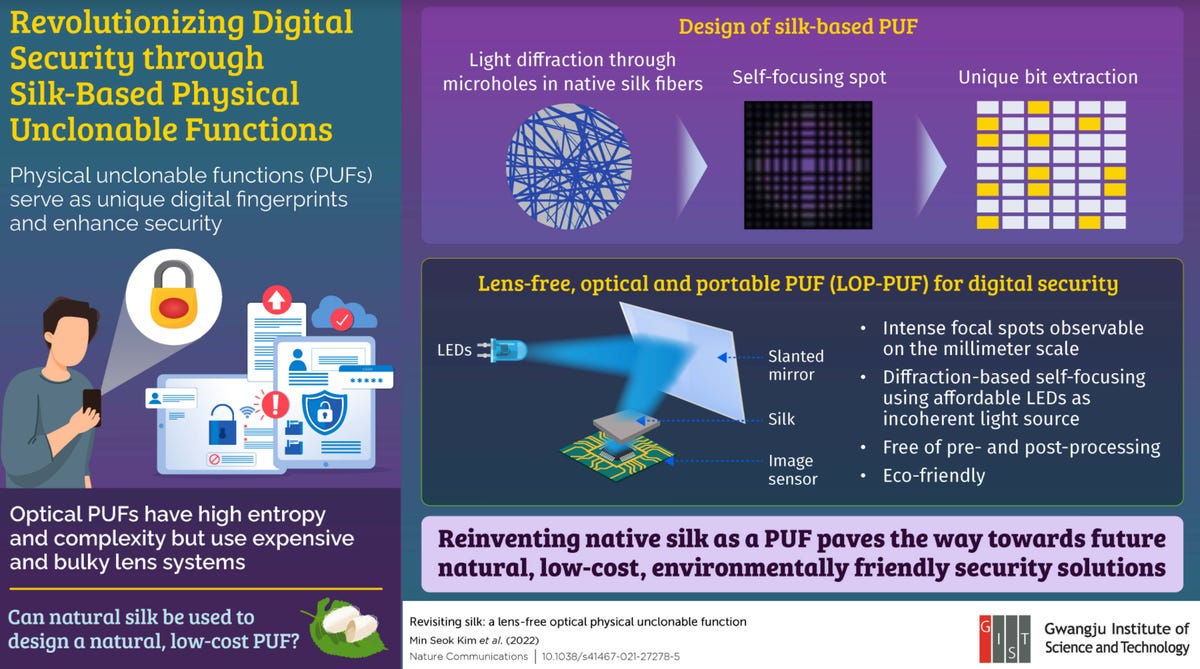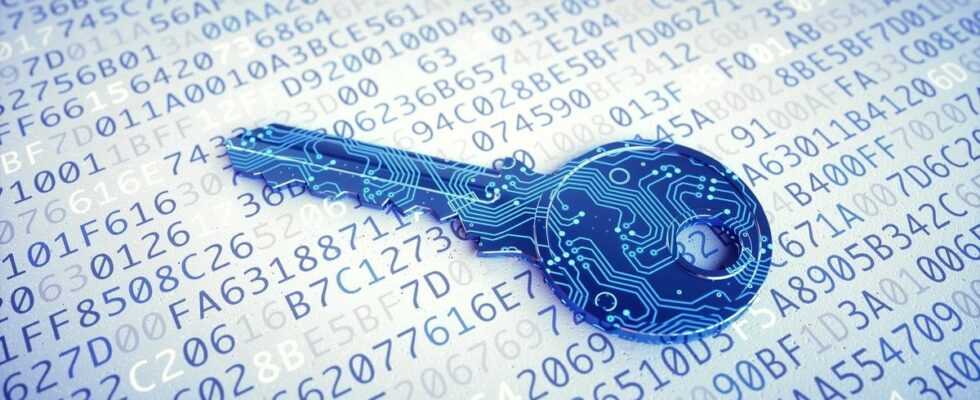Researchers have developed a new way to potentially improve digital security: the use of silk as a security key.
The proposal is the work of South Korea’s Gwangju Institute of Science and Technology (GIST).
In an article entitled “Revisiting silk: a lens-free optical physical unclonable function”, published in the academic journal NatureCommunicationsthe researchers claim that the properties of silk could be exploited to create unclonable physical features.
According to the team, which includes Min Seok Kim, Gil Ju Lee, Jung Woo Leem, Seungho Choi, Young L. Kim, and Young Min Song, the silk could serve as physical security keys for digital services.
Hardware security keys, including Yubikey keys, provide security protection for online services. Google, for example, recommends that “at risk” account holders use a hardware key to reduce the likelihood of compromise by requiring another level of authentication.
According to the GIST researchers, future durable and environmentally friendly authentication keys could be created by taking advantage of the natural, microscopic differences in fibers – tiny differences that could be used to develop unique hardware keys.
The fibers used to test this idea were obtained from Bombyx mori silkworms. GIST then used an image sensor, a light-reflecting mirror, and three light-emitting diodes to capture the patterns of light reflected from the silk to create a security pattern.
“Randomly distributed fibers in silk generate chaotic diffractions in space, forming self-focused specks at the millimeter scale,” the paper says. “A floss-based key exhibits a self-focused, inexpensive, and environmentally friendly characteristic without depending on pre/post-processing to create a security pattern.”
Professor Young Min Song explained that at “optimal density”, a beam of light hitting the silk causes the light to diffraction, and it is on this mechanism that the researchers’ proposal is based.
“The nanostructures of the individual microfibers enhance the contrast of light intensity against the background,” Song commented. “The diffracted light is then captured by an image sensor. Because the pattern of pinholes is made naturally, it is unique, resulting in a unique pattern of light.”
These patterns were then converted into a digital format contained within 15 silk “ID cards”, from which an authentication code could then be extracted by a reader. In a basic brute force attack, the calculated time to bypass authentication was 5 x 10(41) years.
“To our knowledge, this is the first such module made from silk, a naturally abundant biomaterial,” Song added. “This means we don’t need to invest time in developing complicated security keys, nature has already done that for us.”

GIST
Source: “ZDNet.com”
